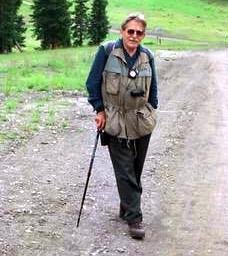
I.S. (Ies) Zonneveld passed away in December 2017. Rob Jongman wrote an In Memorium for the first president of IALE, who was involved in the foundation of IALE.
On December 18, 2017, Prof. Dr. I.S. Zonneveld, Ies for his friends, deceased. He was 93 years old. With him we lose one of the pioneers of landscape ecology, with a thorough holistic vision and a lot of attention to the application of knowledge in practice. Moreover, he was an open person with a big heart for his students and colleagues.
His origin is within the Dutch freshwater tidal area of the Biesbosch. For many, he was “Ies van de Bies, ”the man from the Biesbosch where he was in hiding during the Second World War to escape the “Arbeitseinsatz”, the forced work assignment in Germany. Here he met his wife, who was a botanist and vegetation scientist. He remained involved in this area until the end of his life. Zonneveld studied soil science and vegetation science at Wageningen University and he obtained his doctorate in 1960 on a study into the soil and vegetation and their relations in the Biesbosch.
The basis of his landscape ecological research lies in the overview surveys he made in Asia and Africa. In 1966 he started a new department, applied landscape ecology, at the ITC (International Training Center for Aerial Survey, now part of the University of Twente). Here Zonneveld integrates soil, vegetation and geomorphology, focussing on the application in land evaluation. From 1968 until his retirement he stayed connected with the ITC. From 1972 to 1988 he also taught at Wageningen University and regularly at the University of Utrecht. He has worked throughout the world on international projects in countries such as Colombia, Ivory Coast, Kenya, Mali, Mauritania, Mexico, Thailand, Tunisia, Sudan and Sri Lanka.
Zonneveld brought the Landscape ecology of Troll to the Netherlands. His starting point was that landscape ecology is not a new science in itself, but an integration of knowledge from science fields such as soil and vegetation science, geomorphology, but also from social sciences. He regarded it as transdisciplinary. He was involved in the emergence of the Dutch Working Community on Landscape Ecological Research (WLO). He was a member of the Working Group on theory and he played an important role at the so-called Veldhoven congress in 1981, where it was decided to establish the International Association for Landscape Ecology (IALE). After the founding of IALE in 1982, Zonneveld was asked to be the first chairman at a time when communication between East and West was extremely difficult.
His books, including Land Ecology (1995) and Vegetation Mapping (1988, together with Küchler) are leading in the field. This latest publication, in which he classifies land and vegetation on the basis of the life forms of Raunkiaer, turned out to be the most universal system in recent years, to link large-scale earth observation to in situ process information. It has therefore been the basis for the ecological classification of RS observations of Land Cover information (FAO-LCCS) and in-situ observations as habitat information (General Habitat Categories).
His students can be found all over the world, especially because of his role in education at the ITC and in Wageningen, which both attracted many international students. A selection of the work in which he and his students were involved can be found in the ITC publication 81 from 2001 entitled "Landscape Ecology applied in Land Evaluation, Development and Conservation, Some Worldwide Selected Examples".
He continued to share his knowledge until the end of his life. He looked forward to the scientific-philosophical article of Chunglin Kwa about his scientific method (The visual grasp of the fragmented landscape) that will be published in Historical Studies in the Natural Sciences Vol. 48, 2018 (1).
Rob Jongman

